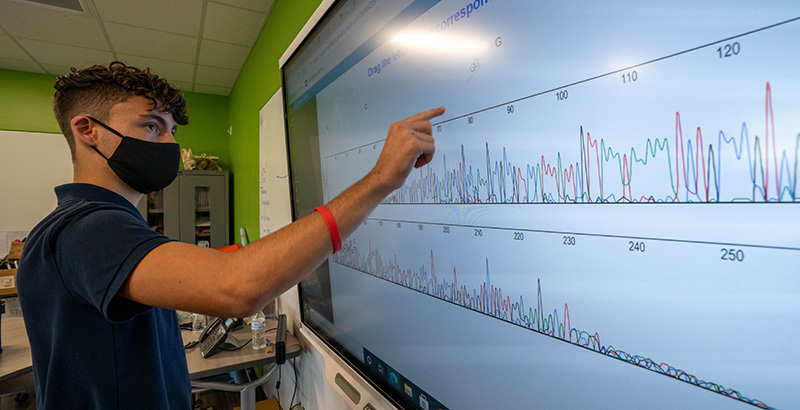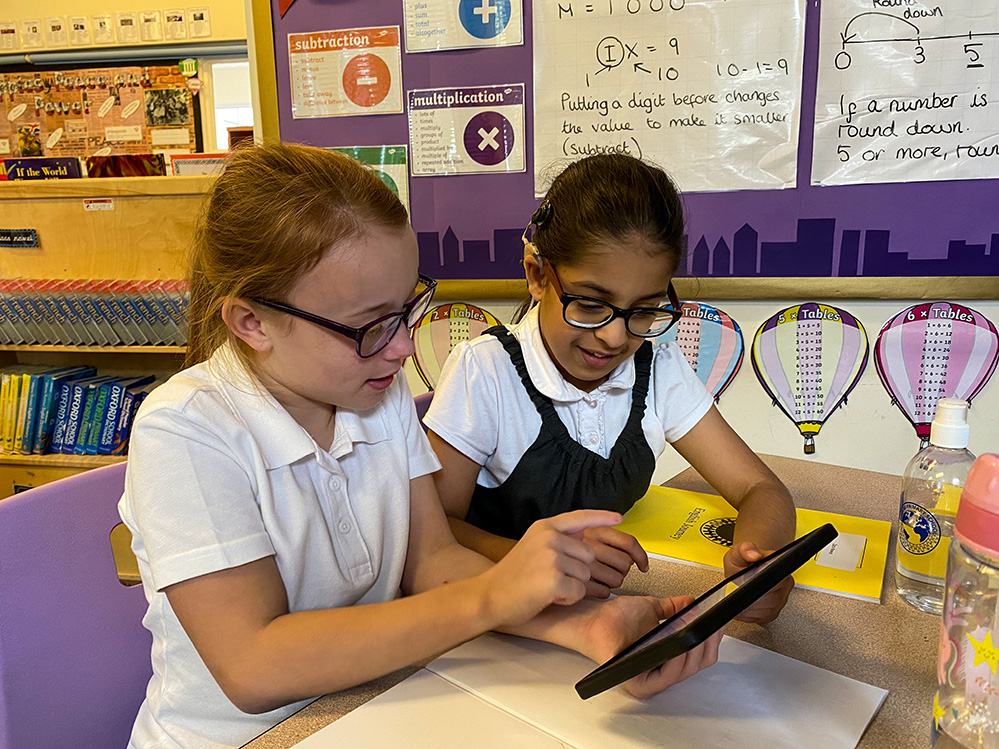Pandemic Gave Teachers New Insight into Ed Tech. Now, it May Be the Next Big Thing in 2022 — and Beyond

Get stories like these delivered straight to your inbox. Sign up for The 74 Newsletter
The spotlight was bright on education technology during the early days of the pandemic in 2020, but the technology’s value didn’t come into focus for every teacher, experts say. Now, with that perspective, school districts and teachers are taking a new look at ed tech, opening a new future for tech in classrooms.
“People seem to be waking up to the reality that ed tech is no longer a separate category and that nearly everything students do has a technology component,” says Bart Epstein, CEO of the EdTech Evidence Exchange. “Accordingly, educators are demanding more information about which students are engaging with various tools — how frequently and successfully.”
Ryan Baker, a researcher at the University of Pennsylvania’s Graduate School of Education, says that during the pandemic, school districts adopted pretty much anything they could. There were great platforms that contributed to a better learning experience for students while providing quality data for teachers, and poor platforms that Baker says were basically a waste of time, made for an unpleasant experience and provided no benefits for learning.
Because of this mass adoption, teachers had an opportunity to see a wealth of options and try some things they wouldn’t have before. And that means a big shift coming in 2022, as successful platforms will continue to see growth — even if not at the rate seen at the height of the pandemic — while others will be cast aside. “A lot of the teachers who adopted something really quickly” during the pandemic “are de-adopting it really quickly,” Baker says. “The vendors who have high-quality offerings, their numbers aren’t dropping below where they were pre-pandemic.”
What does this mean for 2022?
Epstein says that while some districts are still spending stimulus money just to spend it instead of taking the time to research and evaluate their options, most have a better understanding of technology than they did before COVID-19 struck and are demanding information about the tools students use. Dan Carroll, former teacher and founder of Clever, a company that helps school districts integrate ed tech solutions, says that more than half the teachers he’s surveyed expect to continue using most of the new technology they’ve adopted. But the pandemic still left a giant learning loss hole across the country — and that’s where ed tech may focus.
“The next big thing is going to be tutoring and quasi-learning center experiences for students who have fallen behind,” Epstein says, even though, he notes, the transition will endure a “giant mess” that wastes money in the process as people figure out the best way to implement the technology.

Courtesy of Smart Technologies
With districts not set up to hire local, outside tutors and then run a completely new program that integrates their work with classroom teachers’ lessons, Epstein believes tutoring represents a market that technology companies should fill. “Some students need ongoing tutoring support for a few classes,” Epstein says. “Others were socially promoted last year and are so far behind that what they need is someone to teach them an entire year of math. We’re starting to see more real-time tutoring embedded into various programs, and I expect that trend to continue.”
The ability to provide tutoring virtually offers an opportunity, he says.
Baker agrees. He says virtual tutoring will expand in the coming years, led by an effort to link both computer-based and human tutoring in one application for improved efficiency and effectiveness. “We will see a lot more of that over the next couple of years,” he says.
Baker also hopes to see a greater push into simulation technology, applications that make it easy for teachers to integrate tech directly into the classroom while students experience a new skill or learn a new concept through a hands-on virtual experience.
Through it all, Baker and Carroll say, the best companies will not only provide a quality experience for the students in a given classroom, but collect useful information for the teacher.
“I don’t think teachers or administrators want another big thing right now, so, with that in mind, I think the next big thing in ed tech will be about sustainability, improving experiences for end users, finding ways to collect information about what’s working and what needs improvement and making sure that the massive investments that have been made in ed tech over the past 18 months show value,” Carroll says.
He expects popular tools will make teachers’ lives easier by streamlining operations and saving time, as will technologies that can help students master a missing skill or get tutoring support without putting more of a burden on the classroom teacher. Those, he says, “will be in high demand.”
Get stories like these delivered straight to your inbox. Sign up for The 74 Newsletter


